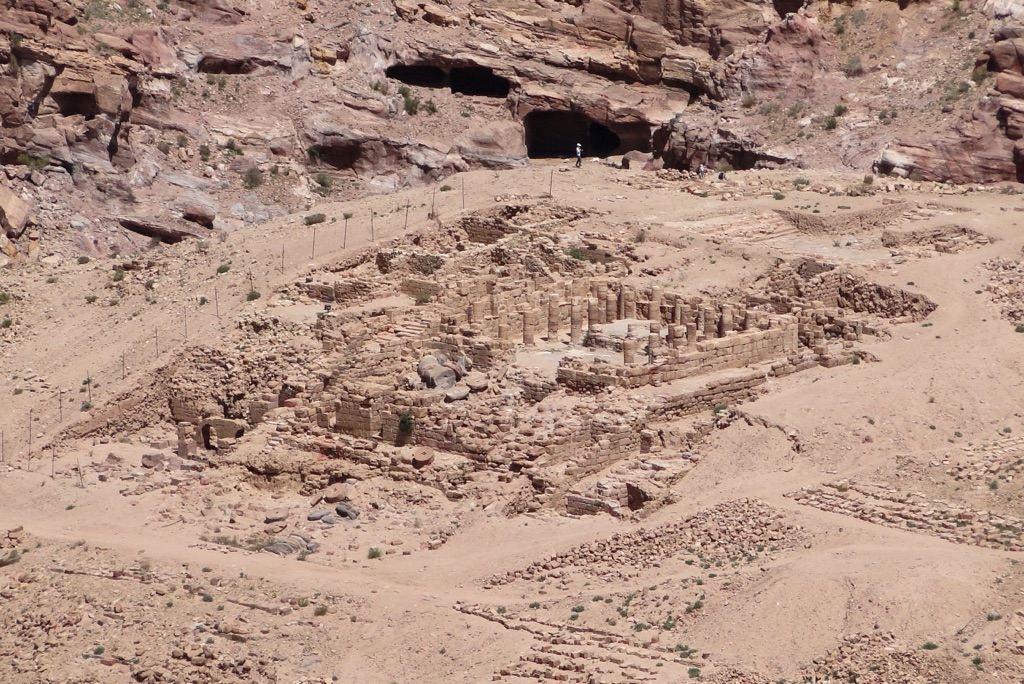A Glimpse into Nabatean Culture
The Temple of the Winged Lions stands as a significant archaeological and historical site within the ancient city of Petra, Jordan. Dated to the reign of King Aretas IV (9 BCE–40 CE), this large Nabatean temple complex is situated in Petra’s Sacred Quarter, opposite the Qasr al-Bint and on the northern bank of Wadi Musa. Its construction and subsequent use provide valuable insights into the religious, economic, and cultural aspects of Nabatean society.
Get your dose of History via Email
Construction and Layout
The temple’s grand entrance features a double colonnade extending 85 meters, leading to a porch flanked by large columns. This opens into a cella measuring 100 square meters, surrounded by a combination of engaged and standing columns. Notably, fragments of twelve columns adorned with winged lion figures were discovered, lending the temple its name. The interior once boasted vibrant decorations, including stucco, marble, and frescoes, indicative of significant Greek and possibly Egyptian influences.
Within the temple, a variety of workshops were identified, suggesting the site’s role in the production of goods for both religious purposes and export. These workshops were dedicated to painting, metal-working, marble-working, and grain processing, among other activities. The presence of a large subterranean drain canal on the east side of the temple further underscores the complexity of its design and utility.
Purpose and Use
Religion
The temple is believed to have been dedicated to a supreme goddess of the Nabateans, though her exact identity remains uncertain. Inscriptions and artifacts, including the “Eye Baetyl” and statuettes possibly representing Egyptian deities, suggest a rich tapestry of religious beliefs and practices. The temple served as a focal point for worship and religious rituals, primarily conducted within the cella.
Economy
The Temple of the Winged Lions also played a significant role in the Nabatean economy. The specialized workshops within the temple complex were instrumental in the production of a wide array of goods, from religious altars to luxury items like perfumes and oils intended for the Roman market. Inscriptions indicate the temple’s financial operations, including the donation of gold and silver bullion, highlighting its economic significance and the management of temple revenue.
Excavation and Ongoing Restoration
First noted by western archaeologists in 1897, the temple has been the subject of extensive archaeological investigation, particularly from 1973 onwards. These excavations have revealed the temple’s complex history of use, decoration, and eventual destruction in the earthquake of 363 CE.
In 2009, the Temple of the Winged Lions Cultural Resource Management (TWLCRM) initiative was launched to preserve and rehabilitate the site. This project emphasizes thorough documentation, responsible conservation, and local community involvement, including the training and employment of community members from the Bedouin village of Umm Sayhoun. Efforts have focused on stabilizing the site, back-filling excavation scars, and reintroducing native plant species to improve the environmental condition of the area.
The Temple of the Winged Lions remains a testament to the architectural ingenuity and cultural richness of the Nabatean civilization. Through ongoing archaeological and conservation efforts, this ancient site continues to offer invaluable insights into the complex interplay of religion, economy, and culture in Nabatean Petra.
Sources:

